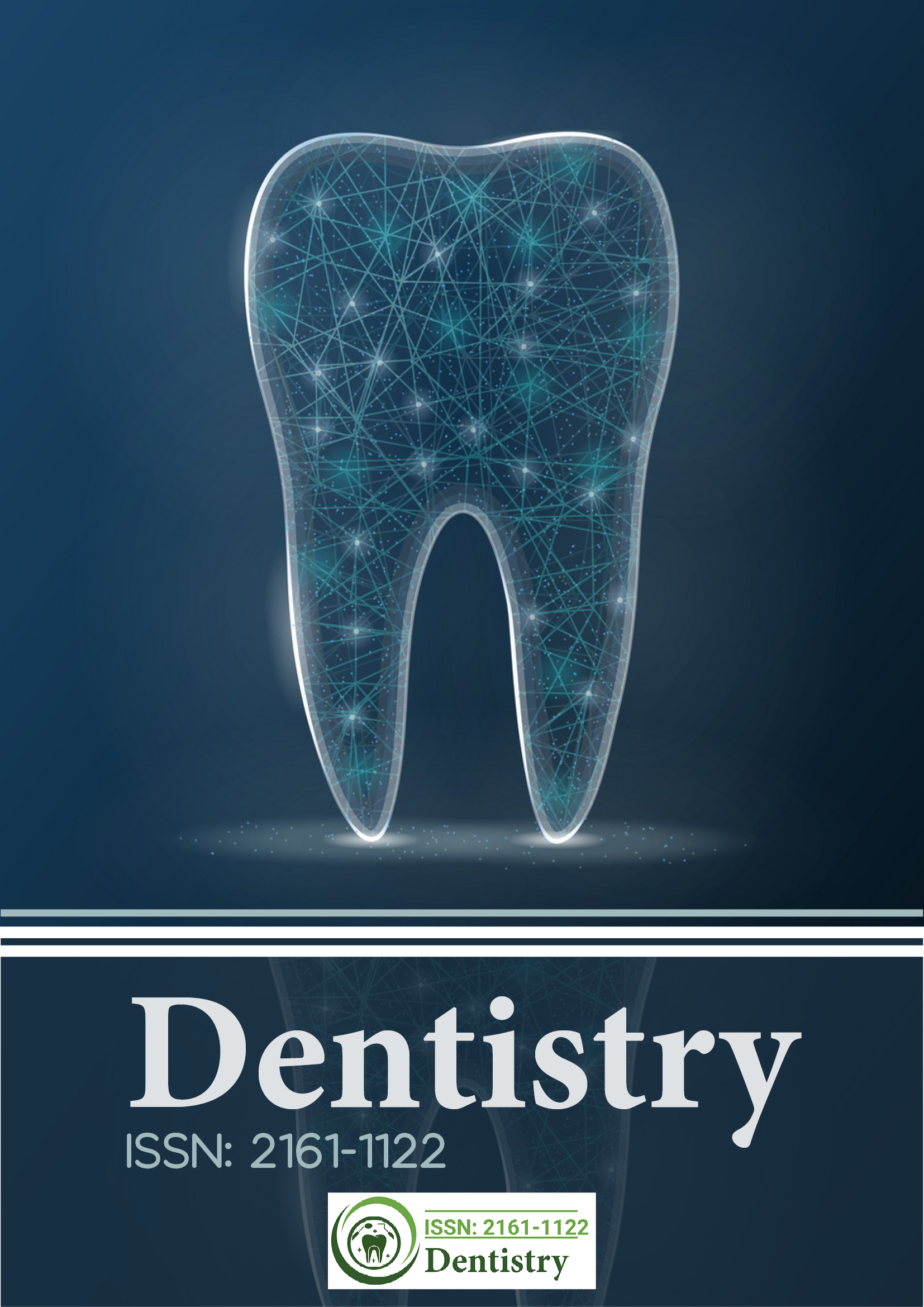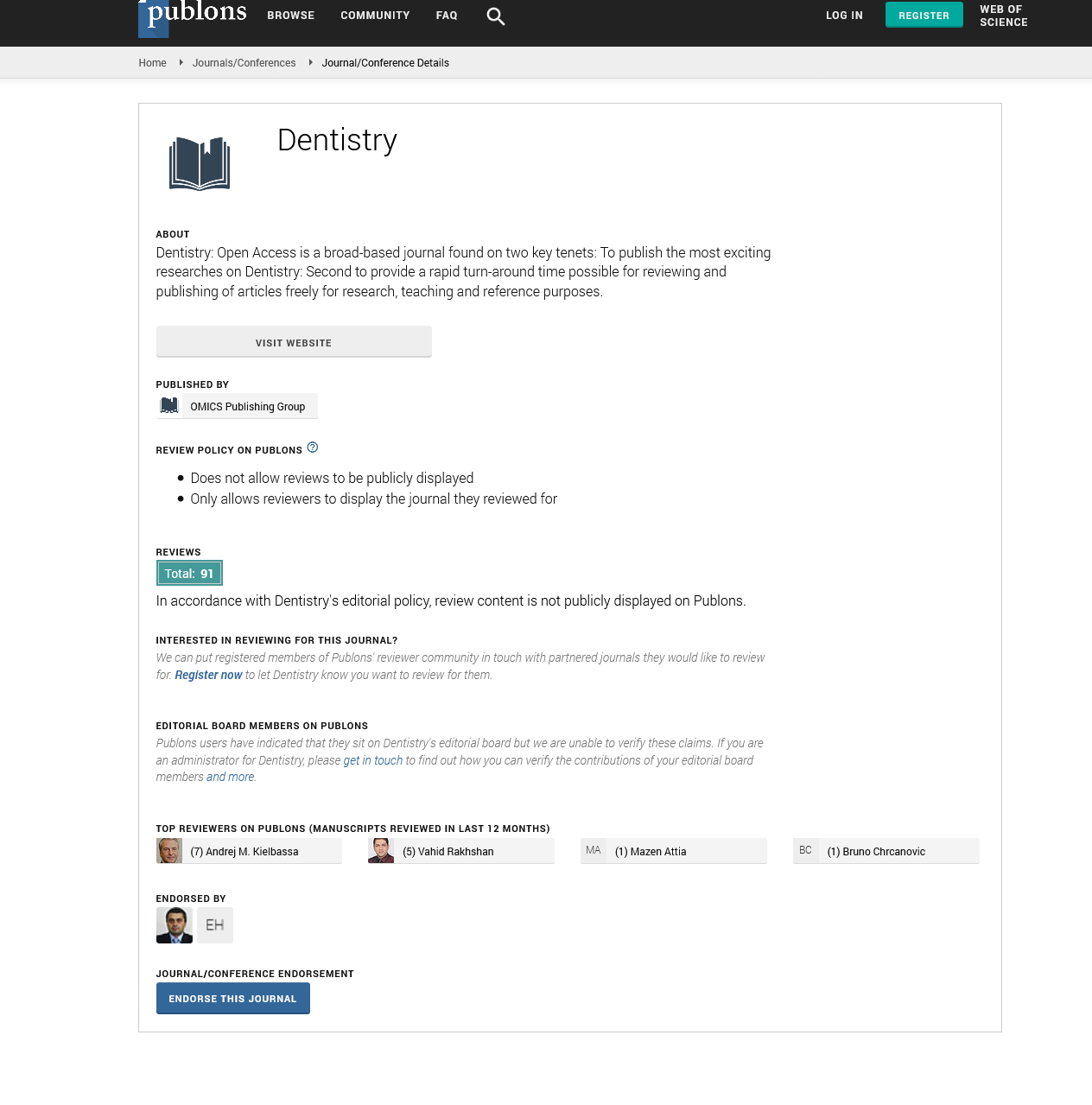Citations : 2345
Dentistry received 2345 citations as per Google Scholar report
Indexed In
- Genamics JournalSeek
- JournalTOCs
- CiteFactor
- Ulrich's Periodicals Directory
- RefSeek
- Hamdard University
- EBSCO A-Z
- Directory of Abstract Indexing for Journals
- OCLC- WorldCat
- Publons
- Geneva Foundation for Medical Education and Research
- Euro Pub
- Google Scholar
Useful Links
Share This Page
Journal Flyer

Open Access Journals
- Agri and Aquaculture
- Biochemistry
- Bioinformatics & Systems Biology
- Business & Management
- Chemistry
- Clinical Sciences
- Engineering
- Food & Nutrition
- General Science
- Genetics & Molecular Biology
- Immunology & Microbiology
- Medical Sciences
- Neuroscience & Psychology
- Nursing & Health Care
- Pharmaceutical Sciences
Puberty associated gingival enlargement: Clinical case report and periodontal management
23rd International Conference on Dentistry and Dental Materials
July 19-20, 2018 | Rome, Italy
Omar Rahim
Mustapha Pacha Hospital, Algeria
Posters & Accepted Abstracts: Dentistry
Abstract:
Introduction: Puberty associated gingival enlargement is one of the gingival diseases categorized as dental plaque induced gingival diseases modified by endocrine system, in the currently accepted periodontal disease classification. Usually, a conventional periodontal therapy comprising of oral prophylaxis, scaling and root planning is sufficient to treat the condition. However, in some cases where there is more amount of fibrotic tissue along with the inflammatory, occurring to surgical means is a key to management success. Aim: The purpose of this study is to report a typical presentation of generalized gingival enlargement associated with puberty and highlight the importance of taking an accurate history in achieving a correct diagnosis and improving a best therapeutic approach to restore aesthetic and masticatory functions. Methods: A seventeen-year-old female patient was referred to periodontology service at Mustapha Algiers University Hospital Center for assessment and treatment of generalized gingival enlargement. According to the medical history which revealed that gums had started swelling up in concomitance with the first menstruations, we associated the clinical features to the hormonal influences occurring in puberty. The swelling was not appeared to be associated with hereditary forms. Results: On intraoral examination, a reddish pink bulging of the interproximal papillae with blunt and rounded marginal gingiva was seen on the facial surface extending from the mesial surface of #31 to mesial surface of #41. It was spineless, friable and edematous There was a presence of marginal plaque and false periodontal pockets with bleeding on probing. Motivation and professional plaque control associated to the classical non-surgical periodontal treatment was performed. Hence to accomplish an aesthetic and functional outcome, surgical reduction of the overgrowth was performed by conventional gingivectomy and wound area was covered with periodontal pack for 1 week. The patient was recalled periodically at 1 week, 2 weeks and 1 month, during maintenance phase to assess the healing. After one month, the patient had an aesthetically satisfactory gingival appearance and no sign of recurrence. Conclusions: At the sexual maturation period the exaggerated response of the gingival tissues to plaque and hormonal influence in microbial flora leads to gingival growth. In the present case, gingivectomy was the treatment of choice after a nonsurgical periodontal management. Patient-reported outcomes were satisfaction and approved aesthetic smile.
Biography :
Omar Rahim received his Bachelor of Science in 2006, and Dental Degree with honors in 2012. He pursued his Postdoctoral specialty training in Periodontology from the Faculty of Medicine, University of Algiers, Algeria. He is an Assistant Clinical in Periodontology Service at Algiers’s Mustapha University Hospital Center. He is proficiently trained in all aspects of periodontics including non-surgical and surgical treatment of periodontal diseases, periodontal bone regeneration and periodontal soft tissue grafting. He is a Member of many clinical and dental organizations including Algerian Society of Pediatric Odontology, Algerian Academy of Head and Neck Surgeons, Algerian Society for organ transplantation, Algerian Society of Medical Biochemistry and Genetics. He has delivered lectures and presentations on numerous periodontal topics at an international and a local congress and attended many continuing educational courses.
E-mail: rahimo.moon@yahoo.fr

